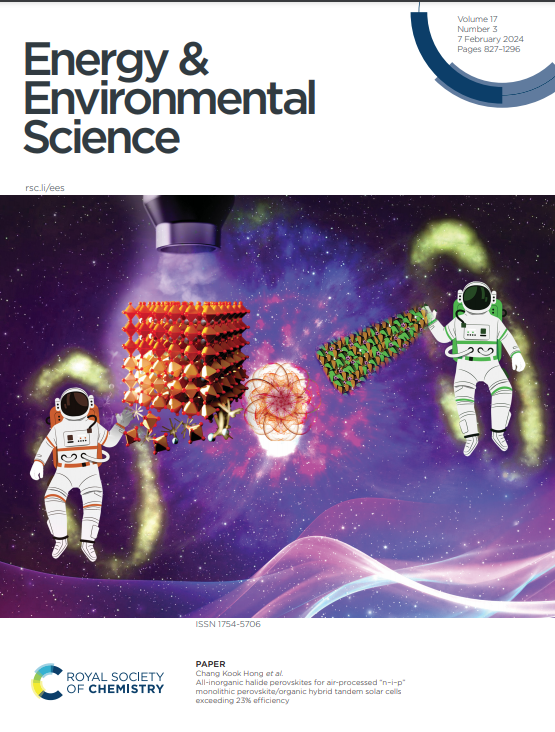Aramid dielectric co-polymer: from molecular engineering to roll-to-roll scalability for high-temperature capacitive energy storage
IF 32.4
1区 材料科学
Q1 CHEMISTRY, MULTIDISCIPLINARY
引用次数: 0
Abstract
Aromatic polymer films with high glass transition temperatures (Tg) exhibit superior thermal stability, making them ideal for high-temperature dielectric capacitors in advanced electrical and electronic systems. However, the leakage current can be intensified at high temperatures due to stronger π-electron delocalization, leading to energy loss and degrading capacitive performance. Here, we present a poly sulfonated aramid (PSA) derived from aramid by molecular engineering, with Tg > 300°C. Sulfone groups with a non-planar structure are introduced to break strong π-π conjugation and subsequently suppress intramolecular charge transfer. Moreover, their large dipole moments contribute to a high dielectric constant. To suppress intermolecular charge transfer, organic small molecules of triptycene (TE) are filled at an optimized content, breaking π-π stacking among PSA chains. The activation energy for trapped carriers is further increased, while the hopping distance is shortened. The PSA/TE all-organic film achieves an energy density (Ud) of 5.71 J·cm−3 at an efficiency exceeding 90% and a maximum Ud of 9.03 J·cm-3 at 150°C. Additionally, sulfone groups also aid self-healing by generating more gaseous products during pyrolysis. A roll-to-roll production line is established for continuously fabricating large-scale and high-quality PSA-based films, allowing for industrial potential for high-temperature capacitive energy storage.求助全文
约1分钟内获得全文
求助全文
来源期刊

Energy & Environmental Science
化学-工程:化工
CiteScore
50.50
自引率
2.20%
发文量
349
审稿时长
2.2 months
期刊介绍:
Energy & Environmental Science, a peer-reviewed scientific journal, publishes original research and review articles covering interdisciplinary topics in the (bio)chemical and (bio)physical sciences, as well as chemical engineering disciplines. Published monthly by the Royal Society of Chemistry (RSC), a not-for-profit publisher, Energy & Environmental Science is recognized as a leading journal. It boasts an impressive impact factor of 8.500 as of 2009, ranking 8th among 140 journals in the category "Chemistry, Multidisciplinary," second among 71 journals in "Energy & Fuels," second among 128 journals in "Engineering, Chemical," and first among 181 scientific journals in "Environmental Sciences."
Energy & Environmental Science publishes various types of articles, including Research Papers (original scientific work), Review Articles, Perspectives, and Minireviews (feature review-type articles of broad interest), Communications (original scientific work of an urgent nature), Opinions (personal, often speculative viewpoints or hypotheses on current topics), and Analysis Articles (in-depth examination of energy-related issues).
 求助内容:
求助内容: 应助结果提醒方式:
应助结果提醒方式:


